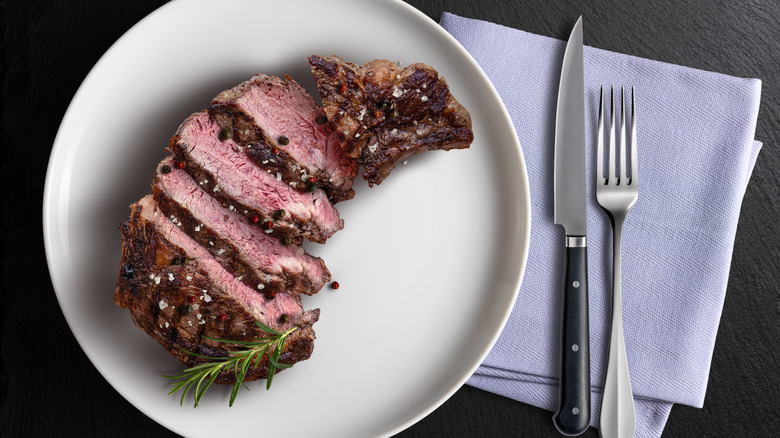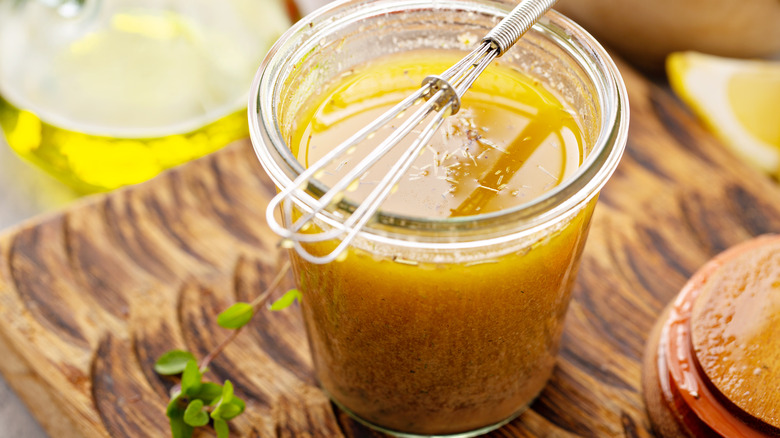Give Your Steak A Tangy Depth Of Flavor With One Common Condiment
Marinades are crucial for infusing steaks with flavor and tenderizing their sometimes gristly textures. Not only is it a transformative meat technique, but marinating a beef cut is also one of the easiest steps in the steak cooking process. Simply combine your ingredients — which should always include an acid, an oil, and flavoring agents — and soak your steak in the marinade. Although simple marinades get the job done, experimenting with bold, unexpected ingredients can lead to exciting new recipes that might just become family heirlooms. Enter mustard — the tangy, spicy, and surprisingly versatile condiment that will transform your average steak marinade from ordinary to extraordinary.
Mustard flaunts a wholly unique flavor profile that sets it apart from not just other condiments but other foodstuffs in general. At its most basic, mustard is made from ground mustard seed, water, and vinegar. Despite being made with just a few ingredients, this age-old condiment has a dynamic and multi-dimensional taste. Marked by notes of peppery sharpness accented by tangy undertones and a pungent yet pleasant bitterness, mustard infuses steak with a bold but never brash dimension of flavor. Although it has a singular taste, mustard marries well with other classic marinade fixings, ensuring that it can slide seamlessly into your favorite combination of fats, spices, and acids. Of course, mustard itself checks the boxes for both flavor and acid, so you don't need much more to achieve a robust steak marinade.
Tips for marinating steak with mustard
Preparing a mustard-tinted marinade for steak is accessible to foodies of all skill levels. However, there are a few tips worth keeping in mind to get the most out of this daring and zippy flavor bomb.
For starters, consider which type of mustard best suits your tastes. Plain yellow mustard is a tried-and-true option that imbues steak with those classic flavor notes characteristic of the condiment. This prototypical option pairs well with other marinade ingredients like extra virgin olive oil, garlic, and Worcestershire sauce. For a similar yet sharper taste, opt for Dijon mustard instead. On the other hand, a honey mustard marinade provides steak with a touch of buttery sweetness that functions as the perfect counterpart to its umami-blasted bravado. In addition to oil, honey mustard pairs nicely with fresh herbs like rosemary and thyme, cracked black pepper, and chili flakes. When you're craving something fiery, use spicy mustard in a steak marinade jazzed up with oil, miso paste, and a dash of fragrant honey.
Note that not all steak cuts should be marinated though. Cuts like filet mignon, ribeye, and strip steak are enjoyed for their delicate, nuanced flavors that can be disrupted by the intensity of mustard. Though it might go without saying, always marinate raw meat in the fridge to prevent bacterial growth. How long you should marinate a steak depends on the cut. Tender cuts only need up to two hours of soaking, while tougher cuts can soak for up to 24 hours. Finally, don't limit mustard marinades to steak — this classic condiment can work well in chicken, lamb, fish, and tofu marinades to boot.

